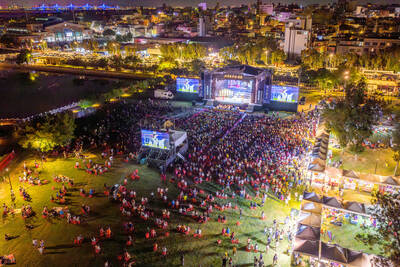Adolf Hitler’s defeat didn’t end prejudice against Jews in Germany or any other country. But the Third Reich did, in Mark Mazower’s judgment, “discredit antisemitism as a positive program for decades to come.”
It is an arresting turn of phrase that makes reckoning with the Holocaust after World War II sound more like a trend in public policy than a moral imperative. But that is the point. Mazower, a professor of history at Columbia University, is talking about a particular manifestation of anti-Jewish sentiment that rose and fell in a relatively short time frame.
The operative word, dissonant in the context of mass murder, is “positive.” People didn’t stop hating Jews after 1945, but they found there was an electoral penalty for boasting about it. The loud, proud style of antisemitism was banished from the mainstream.

Mazower’s book contains many such distinctions — subtle twists of the lens that bring different shades of personal and ideological animus into focus. The underlying thesis is not controversial, at least not as historiography. Medieval massacres, Tsarist pogroms, industrialized slaughter by Nazis, Soviet persecutions and terrorist attacks on Israel all belong to a single category to the extent that Jews are identified as the victims. But they are also functions of diverse economic, religious and political contexts that, from the historian’s perspective, defy being summed up by a single word.
Before you even get to the task of comparing motives for prejudice there is the problem of defining the target. Judaism is ancient, but Jewishness as an identity and, by extension, a set of attributes to be vilified, has evolved. Many of its current secular expressions would have been scarcely comprehensible to devout religious communities in premodern Europe. And yet, centuries-old rituals of faith are a strong pillar of cultural association even for atheist Jews today. Such are the paradoxes that Mazower grapples with in order to bring some precision to the meaning of antisemitism.
The story begins with the coinage of the word in late 19th-century Germany. The concept is embossed with intellectual and political fixations of that place and time — the emergence of nationalism as an organizing principle for European states and the accompanying pseudoscience of racial difference and hierarchy.
For Mazower it is important to distinguish this relatively recent coalescence of anti-Jewish feeling as a driver of political activism from previous generations of animosity. He is especially critical of the tendency to treat antisemitism as a phenomenon as old as Judaism itself — the plotting of 20th-century atrocities on a continuum of hatred that reaches back to biblical narratives of exile, and further still to slavery under the pharaohs. His point is not to deny the long list of regimes and societies that have mistreated Jewish populations, but to resist the fatalism that conflates modern political phenomena with scriptural and liturgical tales of suffering and persecution.
This becomes especially important, and inevitably controversial, when Mazower’s timeline reaches the creation of modern Israel. Differentiating between modes of hostility to Jews before 1948 was a challenge. It becomes spectacularly difficult once the scene shifts to the Middle East.
In 1920, the place most Jews called home was somewhere in Europe. By 1950, it was the US. Now it is Israel, where a radical nationalist government presents itself as the embodiment and only legitimate political expression of Jewish interests worldwide. That is an extreme reconfiguration of the original Zionist project. It is not a view shared by many diaspora Jews, nor indeed by liberal Israelis.
Mazower strives to be systematic in setting out legitimate reasons for political opposition to the actions of the Israeli state and identifying the place where a certain ferocity of condemnation shades into antisemitism. It is possible to express fury at the deaths of civilians in Gaza without tilting into old conspiracy theories about Jews as a uniquely bloodthirsty global power elite. It is possible to demand justice for Palestinians without insisting on the annihilation of Israel.
Crowds of Israelis who protest against Benjamin Netanyahu’s government manage it all the time. Plainly they aren’t all antisemites willing destruction on themselves and their country. That doesn’t mean the charge isn’t leveled against them by fanatical ultra-Zionists, who themselves sometimes aren’t even Jewish. There is a disturbing trend for white supremacists and Christian fundamentalists to adopt extreme pro-Israel stances because they see Gaza as the frontline in a civilizational struggle against Islam.
As Mazower engages with these present-day arguments, his book takes less nuanced, more polemical and US-centric turns. His partisanship for the progressive side in a culture war being waged against US universities by US President Donald Trump’s administration is understandable, but it comes at a cost in relevance to readers in European countries, where the balance of political forces and arguments is different.
But it surely asks too much that a book on this subject, at this inflection point in history, might illuminate all angles equally. For Mazower to provide any respite of clarity on a topic befogged in rage and confusion is achievement enough.

Last week the Chinese Nationalist Party (KMT) announced that the legislature would again amend the Act Governing the Allocation of Government Revenues and Expenditures (財政收支劃分法) to separate fiscal allocations for the three outlying counties of Penghu, Kinmen and Matsu from the 19 municipalities on Taiwan proper. The revisions to the act to redistribute the national tax revenues were passed in December last year. Prior to the new law, the central government received 75 percent of tax revenues, while the local governments took 25 percent. The revisions gave the central government 60 percent, and boosted the local government share to 40 percent,

Many will be surprised to discover that the electoral voting numbers in recent elections do not entirely line up with what the actual voting results show. Swing voters decide elections, but in recent elections, the results offer a different and surprisingly consistent message. And there is one overarching theme: a very democratic preference for balance. SOME CAVEATS Putting a number on the number of swing voters is surprisingly slippery. Because swing voters favor different parties depending on the type of election, it is hard to separate die-hard voters leaning towards one party or the other. Complicating matters is that some voters are

Sept 22 to Sept 28 Hsu Hsih (許石) never forgot the international student gathering he attended in Japan, where participants were asked to sing a folk song from their homeland. When it came to the Taiwanese students, they looked at each other, unable to recall a single tune. Taiwan doesn’t have folk songs, they said. Their classmates were incredulous: “How can that be? How can a place have no folk songs?” The experience deeply embarrassed Hsu, who was studying music. After returning to Taiwan in 1946, he set out to collect the island’s forgotten tunes, from Hoklo (Taiwanese) epics to operatic

Five years ago, on the verge of the first COVID lockdown, I wrote an article asking what seemed to be an extremely niche question: why do some people invert their controls when playing 3D games? A majority of players push down on the controller to make their onscreen character look down, and up to make them look up. But there is a sizable minority who do the opposite, controlling their avatars like a pilot controls a plane, pulling back to go up. For most modern games, this requires going into the settings and reconfiguring the default controls. Why do they